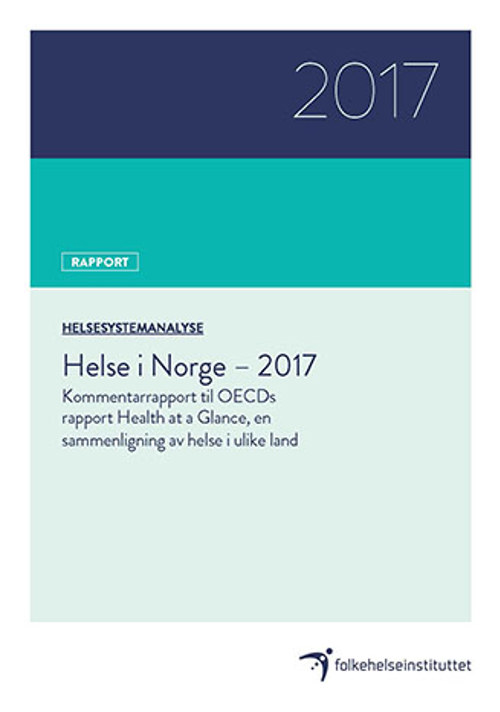Health in Norway – 2017: Commentary report for OECD comparison of health in different countries
Report
|Updated
«Health at a Glance» is a series of reports published by the OECD every other year. They present the most recent comparable data on health status of populations and health systems in OECD countries.
Summary
«Health at a Glance» is a series of reports published by the OECD every other/second year/biannually. The reports present the most recent comparable data on the health status of populations and health system performance in OECD countries. The 2017 edition contains results from 35 OECD countries, based on the latest available data from 2015 and 2016.
This report presents the results for the Norwegian health system. The purpose of the report is to make information more accessible to a wider audience and contribute to further debate on the quality and resources in health care. OECD countries vary in terms of population composition, funding and organization of health services, as well as different ways of registering and reporting data. We have therefore chosen to highlight issues on data quality and comparability where especially applicable.
This year’s report confirms the general impression from previous reports: Health status in Norway is good with high life expectancy, good health and low mortality after acute conditions such as heart attacks and stroke. Lifestyle choices in the population are generally good, compared with the average in OECD countries, with a lower consumption of tobacco and alcohol and higher consumption of fruit. Norwegian, Swedish and Danish doctors are among those prescribing fewest broad spectrum antibiotics, helping to reduce the emergence of antibiotic-resistant bacteria.
Meanwhile, the incidence of cancer is high. For many cancers, such as acute leukaemia in children and breast cancer, Norway is among those countries with the highest percentage surviving five years after diagnosis. At the same time, the mortality rates for intestinal cancer is higher than in most OECD countries. Patients with severe psychiatric diagnoses also have considerably higher mortality than those in rest of the population, and compared to similar patients in other OECD countries.
Healthcare costs in Norway are high. Norway is also the country with the highest proportion of healthcare costs going to primary care and welfare, closely followed by the other Nordic countries. At the same time, there are fewer beds for the care of the elderly in Norway than in the other Nordic countries and the OECD average. Consumption of primary health care services in Norway is high when considering the number of doctor visits compared to the population, with the population consulting a doctor more often than those in other countries. At the same time, patients in Norway more often express discontent when it comes to communicating with a doctor.
Norway is among OECD countries with the highest number of doctors and nurses in the population and the number of consultations per doctor is low. The higher number of doctors can be one reason doctors have fewer consultations than in other countries. It could also be related to how the services are organized in Norway and that general practitioners in Norway are able to do more tasks typically solved by other healthcare professionals in other countries.

